Today I visited the old Columbia Records factory in the Athens suburb of Rizoupoli [Ριζούπολη]. The first of its kind in Greece, the factory was established in 1930 by the British Columbia Graphophone Company in order to expand its activities in the Middle East and Balkan regions. Construction work began in 1928 and was finished in December 1930, with the site spanning 3.5 acres at 127 Iraklion Avenue [Λεωφόρος Ηρακλείου 127]. The first 78rpm shellac disc was pressed on December 20th, 1930, however an actual recording studio was not established on the site until 1935, dubbed “Studio III”. It had a long life span, and was in use right up until 1965.

In 1941, the German occupation of Greece effectively ended the activities of local record companies, and the site was re-purposed as a repair centre for military vehicles. Metal masters were melted down for scrap and valuable company documentation was destroyed. The factory also underwent further damage during the Greek Civil War of 1946-1949.
In the years that followed, up until the 1980s, the company experienced its “golden age”. Hundreds of Greek music records were produced, featuring the leading composers, lyricists and musicians of the day. Great success was also achieved with the manufacture and exportation to the Middle East of LPs and cassettes.

The factory’s demise began in 1983 when the recording studio was closed, and later in 1991 the whole site was shut down for good. During its 60 years of operation over 200,000 songs were recorded, making it a landmark site in the history of music and recorded sound in Greece. In 2006, plans were made to preserve the area and turn the remaining buildings into a museum. This plan came to nothing, and the site was left abandoned and derelict.

Australia too has been guilty of ignoring its recorded sound history. The Columbia record factory on Parramatta Road in the Sydney suburb of Homebush was the epicentre of local recording and record manufacture from its inception in 1926 until the 1950s. Today it is a large storage facility, with the only hint of its past being a street sign bearing the name “Columbia Lane”. Its Greek counterpart reveals its former life through the name of the bus stop adjacent to the main gates, proclaiming in bold, capital letters: ΚΟΛΟΥΜΠΙΑ.
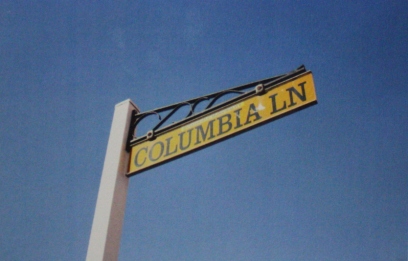
In an act of cultural vandalism to rival the Elgin Marbles, the original “Columbia” letters and two “magic notes” logos on the gate had been torn down. Natalie Rassoulis was first to raise the alarm through a Facebook post made on January 30th. Having recently passed by the site on a train ride, she expressed shock and anger that the signs had been torn down without prior approval or permission. One photo seems to show the process of removal, with only the first four letters of the company name visible. The other shot shows a van parked on the roadside with a ladder leaning on the main gates.
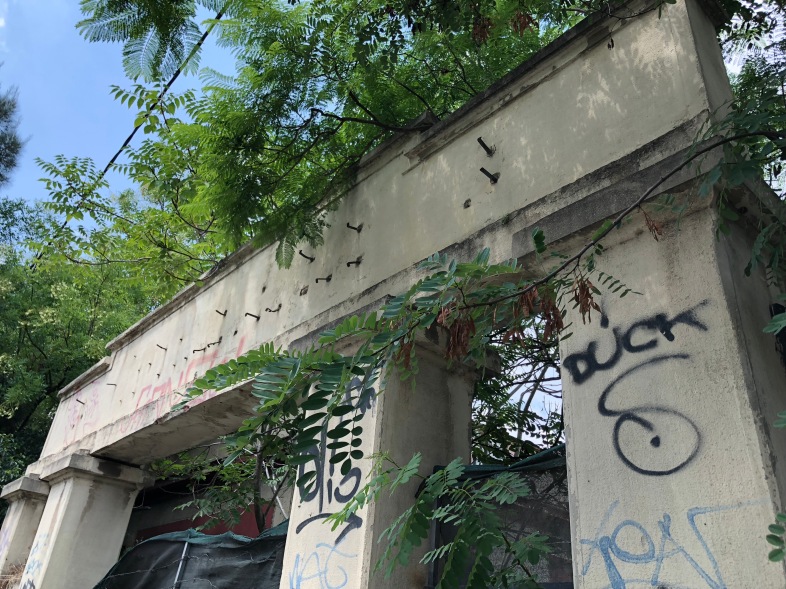
It is currently unknown whether the removal was ordered by the owners of the complex, or if this was an act of outright theft. Equally unknown is the fate of the signs and whether they have been preserved or destroyed. It is hoped that more information will surface after this article is posted. But for now, these photos document the sad demise of the most significant site in Greece’s music and recorded sound history.
-Michael Alexandratos
Athens, July 2018.
Photos by Michael Alexandratos. July 29, 2018.
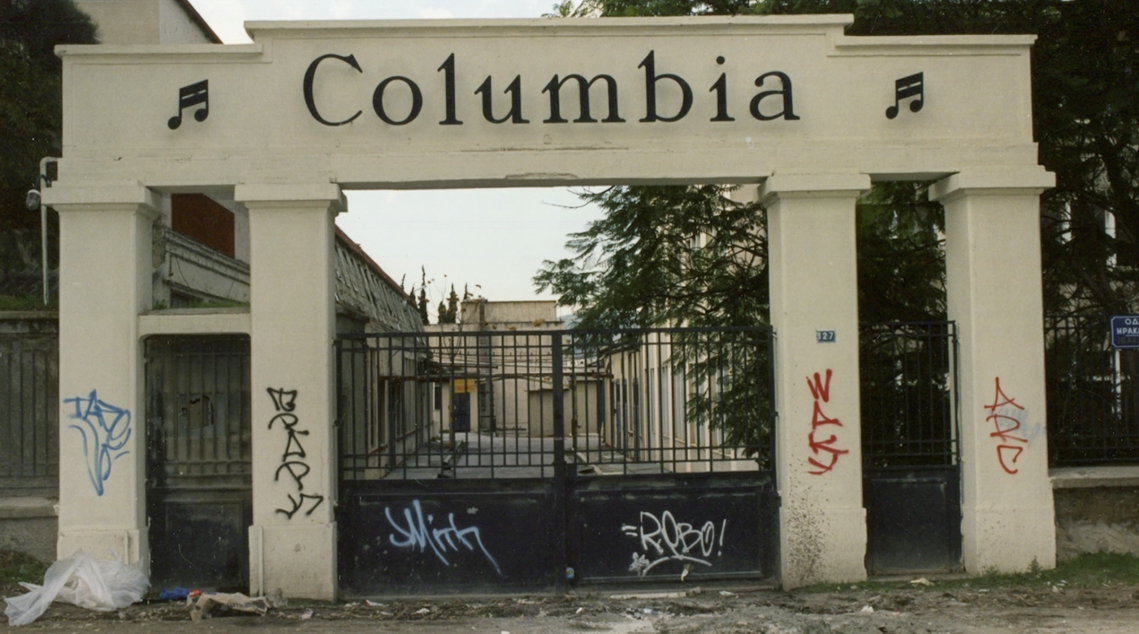 Still from Dionysis Kouris’ film “Transit in Columbia, Athens” (2010), showing all original letters and logos adorning the main gates, including un-demolished buildings within the complex.
Still from Dionysis Kouris’ film “Transit in Columbia, Athens” (2010), showing all original letters and logos adorning the main gates, including un-demolished buildings within the complex.
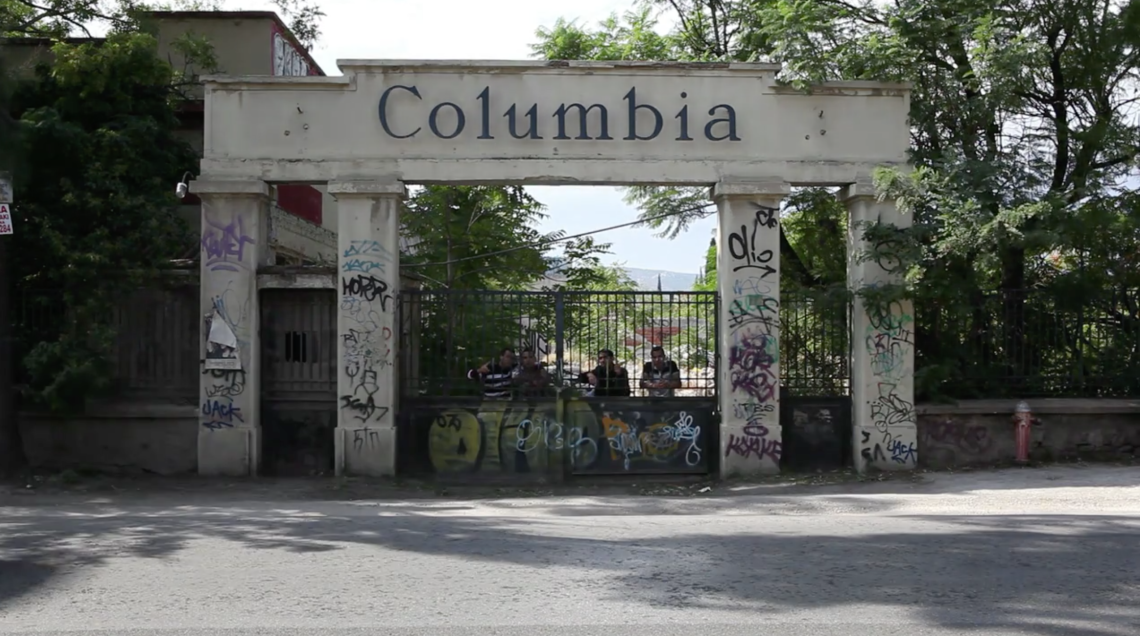 Still from Dionysis Kouris’ film, providing a view of the front gates as of c. 2009.
Still from Dionysis Kouris’ film, providing a view of the front gates as of c. 2009.
Archival photos taken as screenshots from Dionysis Kouris‘ film “Transit in Columbia, Athens” (2010). Photo credits: Elias Petropoulos Papers, Gennadius Library, Athens, Elias Kapetanakis & Dimitris Yfantis.
Check out his other amazing work at: https://www.dionysiskouris.com/
Facebook post of Natalie Rassoulis, January 30th, 2018.

Google maps view of the route I walked from the Perissos metro station [Σταθμός Περισσός].
Sources (Greek)
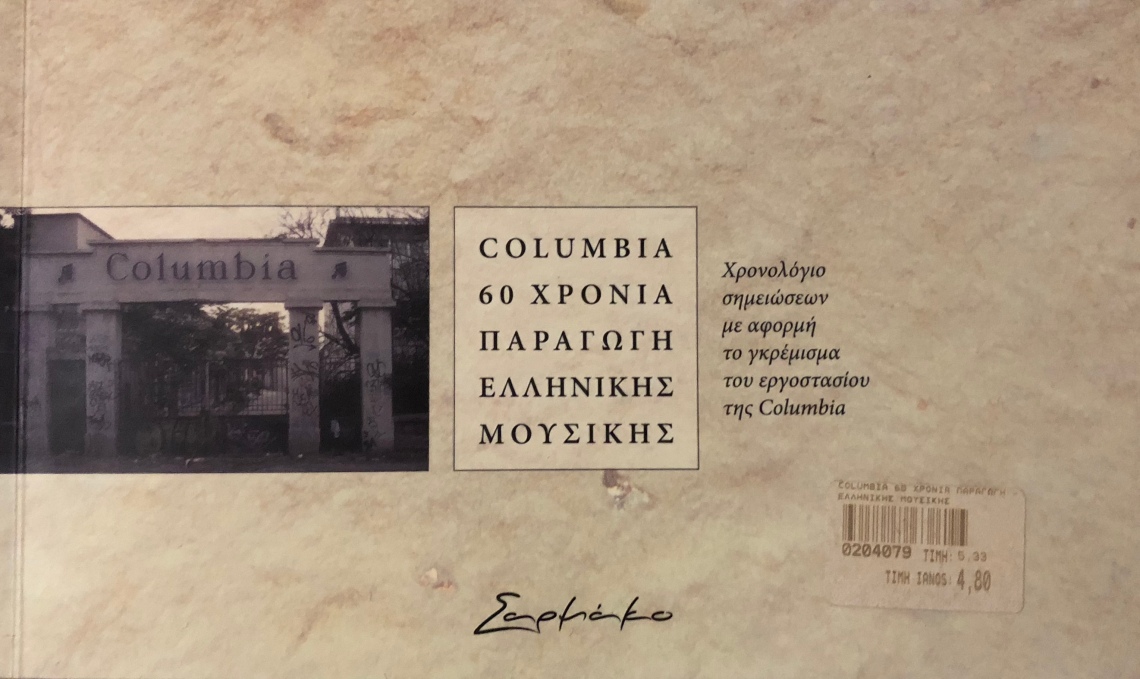
http://paysanias.blogspot.com/2009/04/blog-post_9190.html
http://www.tovima.gr/culture/article/?aid=84938
https://www.newsbeast.gr/weekend/arthro/2115868/to-ergostasio-fantasma-tis-columbia
https://www.radiofono.gr/node/133
http://urbanlife.gr/urban-city/ergostasio-tis-columbia/
http://www.ogdoo.gr/apopseis/filoi/notis-mavroudis-to-palio-mas-spiti-i-columbia
http://www.tovima.gr/society/article/?aid=413743
http://www.ogdoo.gr/epikairotita/mousika-nea/apokathilothike-kai-i-tampela-tis-columbia
Sources (English)
https://www.facebook.com/pg/recordstories/photos/?tab=album&album_id=1629634263968646
http://www.ekathimerini.com/54495/article/ekathimerini/news/change-of-tune-could-save-record-factory
http://desertedplaces.blogspot.com/2014/07/an-abandoned-record-factory-in-athens.html
https://www.opensocietyfoundations.org/moving-walls/23/transit-columbia-records-athens
*All links current as of July 29, 2018.




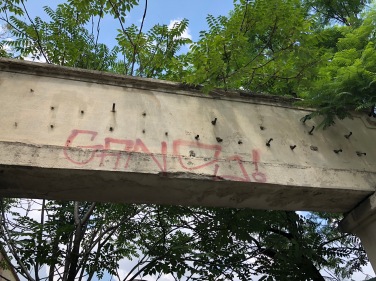

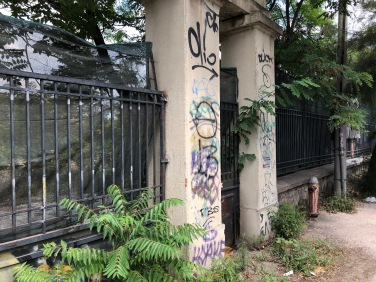

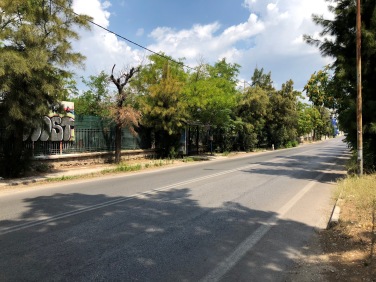



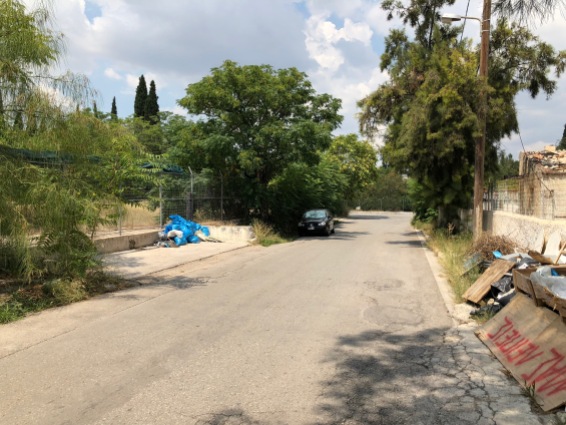

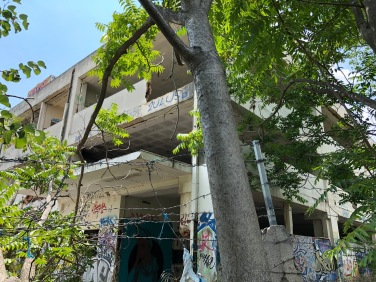









I would see old studios from the train when I worked in Athens in 1989. I am so sad at the destruction of such a significant part of Athenian and Greek music and technological culture. I have returned to Athens many times since and thought, couldn’t the site owners made some effort to store the old masters, the ‘notes’ from the front gate?
LikeLiked by 1 person
Thanks for your comment Russell. There are many things that could have been done to reinvigorate and preserve the site. Although this seems obvious to us, the situation is quite complicated and messy, and even I can’t fully wrap my head around it. There are currently efforts being made to tell the full story in a documentary. Hope that clears things up and answers some of our pressing questions…
LikeLike